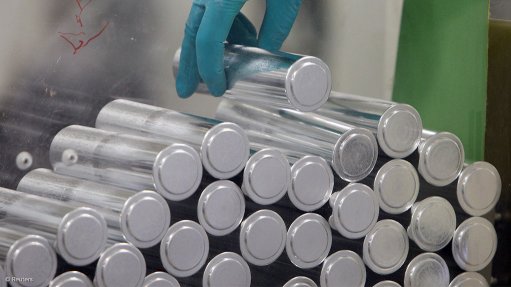
Photo by: Reuters
Scientists from the South African Nuclear Energy Corporation (Necsa) and Necsa fluorochemical subsidiary Pelchem have developed a lower-cost method to produce high-purity phosphorus pentafluoride (PF5), which is used to manufacture lithium hexafluorophosphate (LiPF6) – the electrolyte used in most lithium-ion (Li-ion) batteries.
The work was completed as part of a doctoral thesis at the University of Pretoria and a patent had been filed for the new process.
LiPF6 is a white crystalline solid in its pure form and is used as a dissolved salt solution in batteries, with its supply considered “critical” for the expansion of the Li-ion battery industry.
The current commercial processes involved in producing PF5 use either high-cost raw materials or produce undesirable waste products.
The Necsa process, however, uses low-cost start-up materials through which the PF5 could be produced in high purity.
The electrical vehicle and electronics for commercial aircraft markets are considered a growing market for Li-ion batteries, with growing interest in bulk energy storage systems. The global market for Li-ion batteries was $11-billion in 2012 and is expected to grow to $35-billion by 2020.
As a result of the product’s importance, the South African Department of Trade and Industry had embarked on a Fluorochemical Expansion Initiative aimed at increasing the local beneficiation of the country’s fluorspar mineral reserves, with strategic research and development support from the Department of Science and Technology.
South Africa has the largest global reserves of fluorspar, at 40-million tons.